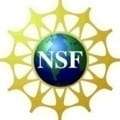Protein post-translational modifications (PTMs) are ubiquitous events that regulate the core biological functions of the cell. Unsurprisingly, the number of drugs or compounds in clinical trials that target PTM effector proteins is growing rapidly. The most common small-molecule derived modifications include phosphorylation, methylation, and acetylation of specific residues in target proteins. In the context of this molecular signaling language, PTMs exert dynamic and timely control over cellular responses, without the need for comparatively expensive and slow protein turnover. Advances in proteomics techniques have revealed thousands of PTMs in human cells that are still mechanistically uncharacterized.
Our efforts toward understanding the influence of PTMs on intrinsically disordered protein structure and function are organized into two major projects, discussed below. We are actively seeking a new postdoctoral associate and new graduate students interested in research related to these two general areas.
Project 1: Expand structure-function analysis of phosphorylation-dependent conformational switches.
Phosphorylation of serine and threonine residues adjacent to proline is an abundant post-translational modification in IDPs. We have recently initiated a study of the RNA Polymerase II CTD, in collaboration with our colleague Dr. David Gilmour. Cyclin dependent kinase complexes phosphorylate Ser-Pro pairs of CTD as part of a mechanism known as the “CTD code.” The CTD is an array of repeats with consensus sequence YSPTSPS. In multi-cellular eukaryotes significant sequence variation is also observed in the CTD, particularly in the seventh position of the heptad; through mass spectrometry, we have demonstrated that some seventh-position variations alter kinase substrate specificity. In 2017 we demonstrated that in the context of Ser-Pro-Asn tripeptides the proline experiences a strong, phosphorylation-dependent, transition to the cis-Pro peptide conformation. Further, this structural feature results in a proportional rate enhancement of Ssu72-catalyzed dephosphorylation. In summary, our past work has poised us to continue generating field-changing discoveries of demonstrable, mechanistically-relevant structure transitions in IDP ensembles.
We are currently working to expand our knowledge of phosphorylation-mediated conformational switches in IDPs and we are actively seeking students or postdocs for this project.
Recent Publications
Gibbs, EB, Lu, F, Portz, B, Fisher, MJ, Medellin, BP, Laremore, TN, Zhang, YJ, Gilmour, DS, Showalter, SA. Phosphorylation Induces Sequence-Specific Conformational Switches in the RNA Polymerase II C-Terminal Domain. Nat Commun. 2017; 8: 15233. PMCID: PMC5437310
Portz, B, Lu, F, Gibbs, EB, Mayfield, JE, Mehaffey, MR, Zhang, YJ, Brodbelt, JS, Showalter, SA, Gilmour, DS. Structural Heterogeneity in the Intrinsically Disordered RNA Polymerase II C-terminal Domain. Nat Commun. 2017; 8: 15231. PMCID: PMC5437306
Gibbs, EB, Laremore, TN, Usher, GA, Portz, B, Cook, EC, Showalter, SA. Substrate Specificity of the Kinase P-TEFb Towards the RNA Polymerase II C-Terminal Domain. Biophys J. 2017; 113: 1909-1911. PMCID: PMC5685781
Burkholder, NT, Medellin, B, Irani, S, Matthews, W, Showalter, SA, Zhang, YJ. Chemical Tools for Studying the Impact of cis/trans Prolyl Isomerization on RNA Polymerase II Phosphatase Activity and Specificity. Methods Enzymol. 2018; 607: 269-297. PMID: 30149861
Project 2: Develop NMR strategies to investigate transcription factor lysine-N-methylation.
A major bottleneck persists in the transcription and cellular signaling fields due to the limited mechanistic understanding of non-histone protein methylation. Study of methylation lags far behind protein phosphorylation despite recent evidence that lysine methylation is ubiquitous. We have begun to leverage our 13C direct-detect NMR pipeline to explore the hypothesis that methylation induces (sequence directed) structural transitions, akin to those we have observed for phosphorylation.
We are interested in recruiting postdocs and students who are motivated to learn both biochemistry and NMR pulse programming in support of this project.
Funding Acknowledgement
This project is supported by NSF grant MCB-1932730


